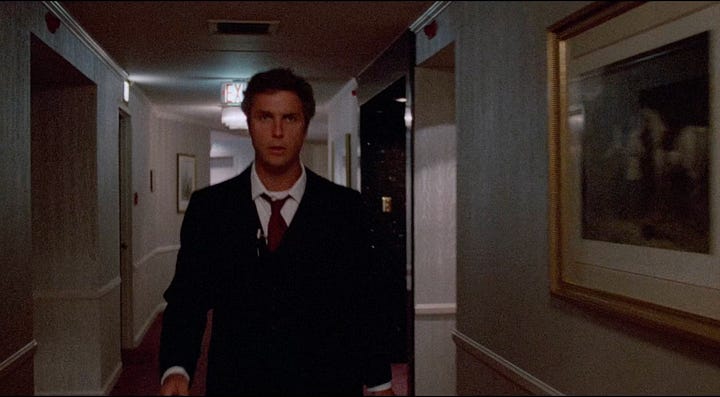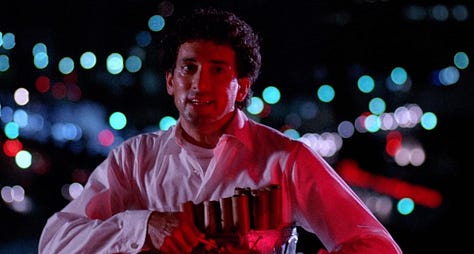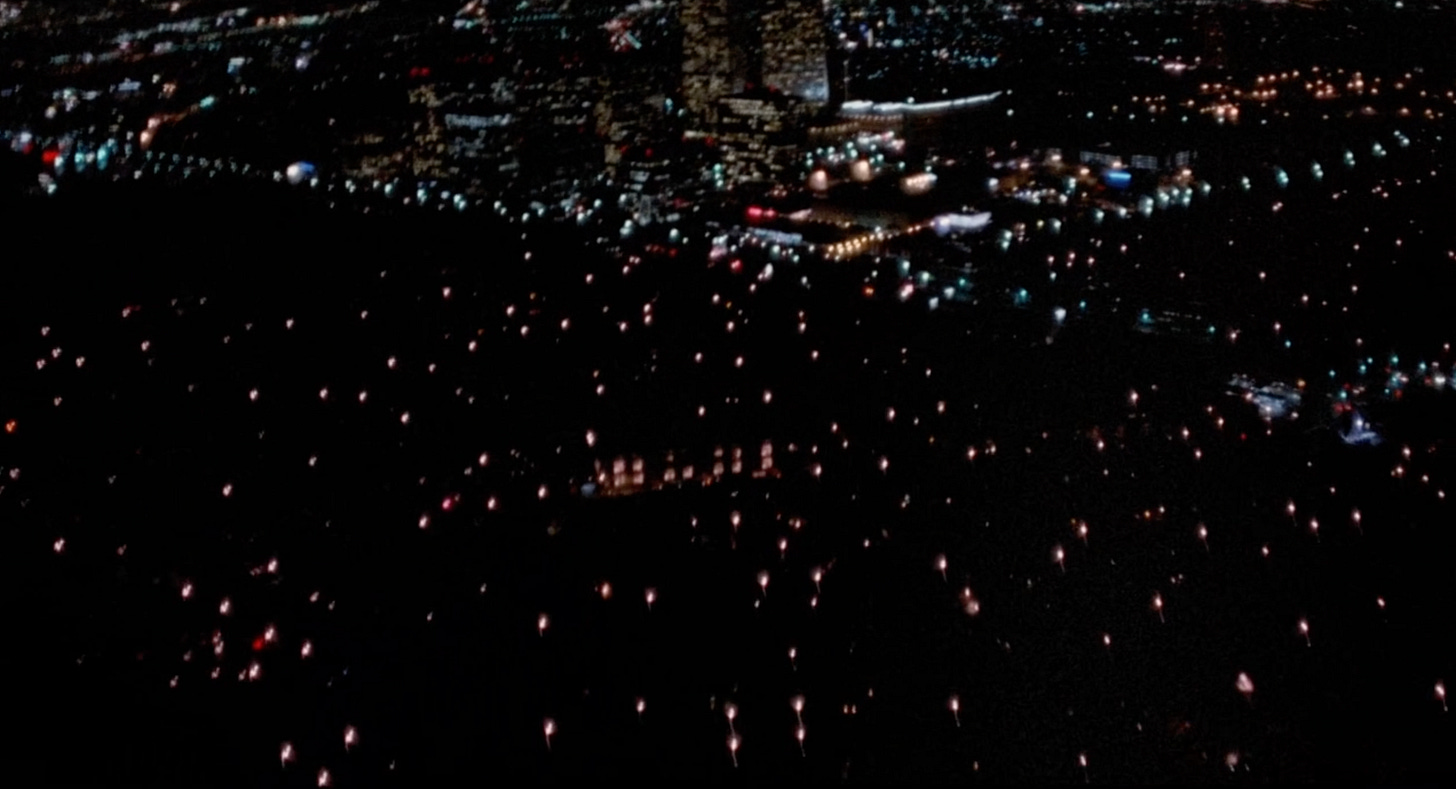With an opening five minutes of spectacle, character, backstory, and pure fucking style (not to mention Peak Hot William Petersen in some truly stunning fits), To Live and Die in L.A. opens with several types of shots which tell us about character while setting the style and tone — plus one very particular type of shot — the whole movie will use.
This one’s a doozy; worth five minutes to watch before we jump into how it uses contrast, colour, movement, and spectacle to establish the film’s style and tone.
Contrast, Movement, and Spectacle
A giant wide of a sunrise cuts to a closeup of a flag flapping.
The shot size really matters; this is not a sequence in all mediums, but a five minutes which is constantly shifting from closeups to mediums.
Several shots of a motorcade where camera, cars, or both, move to convey us along, varying shot sizes while always giving the idea of propulsion.
Sometimes the size and spectacle shifts with editing, and sometimes within a moving shot, as the one following the motorcade from a closeup of pavement marks to a wide of a hotel; starting and finishing like so:


Then a shot shows us who characters are: Jim Hart (Michael Greene) steps into frame, the camera follows as he walks away, that leads our eyes to Chance (William Petersen). Both their initial poses and framing are the same, telling us these men are partners and have been a while, their thoughts in sync, both on edge and aware shown as much by their actions as their earpieces.
Then bright day shots BAM cut to another huge wide of the city, now at night.


With no ceremony, that change from sunny closeups to jet-black city establisher lets us know it’s the end of a long day for Hart and Chance, who we immediately rejoin as they walk through the building: spinning, squinting, aware, the shots showing us their practiced movements.
Chance’s scene intercuts his moving with a moving POV as he passes identical doors and indistinguishable mass produced paintings, putting us in his headspace.


Colour
After a suspicious room service tray catches his attention, Chance starts to runs through the cool blue-white of the hotel and opens a door which spills red light over him: this sudden red signals the shift into action, danger, and a rooftop scene which uses contrasting backdrops of spotted mostly-red city lights for the perp and plain slates of grey and teal for the agent.



Establishing Style
Along with the above, the stylised 'negative effect' with that short sharp chaotic blast set up a particular visual effect the film will occasionally come back to.


After the short sharp chaos, the scene continues using red and teal; first intertwining on the twisted road leading into the city, then backdropping and highlighting Chance and Jim recovering.
Not for nothing does this slower-paced dialogue scene start with Chance exhaling cigarette smoke against the hazy city lights; the depth of field has only him in focus here, drawing our attention to his emotional state, but also just the sheer, beautiful fact of him smoking on celluloid.
Takeaways
The opening five minutes keep our interest with a wide variety of shots and movement, show-don’t-tell us who Chance and Hart are and how alike they are, and establish visual motifs the entire film will use.
It’s economy of storytelling in which every shot is distinguishable, every shot serves a purpose within its mini-sequence as well as opening five minutes overall, while also every shot is compelling and beautiful in its own right.







